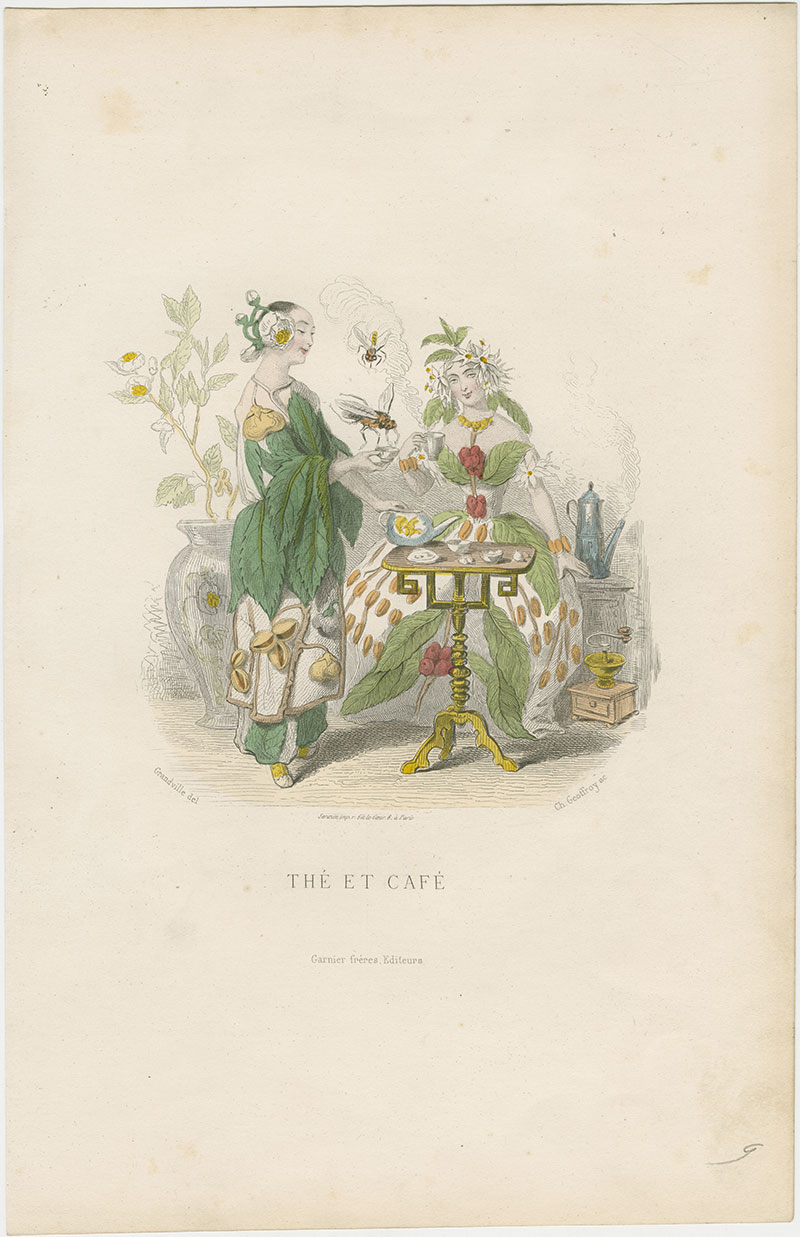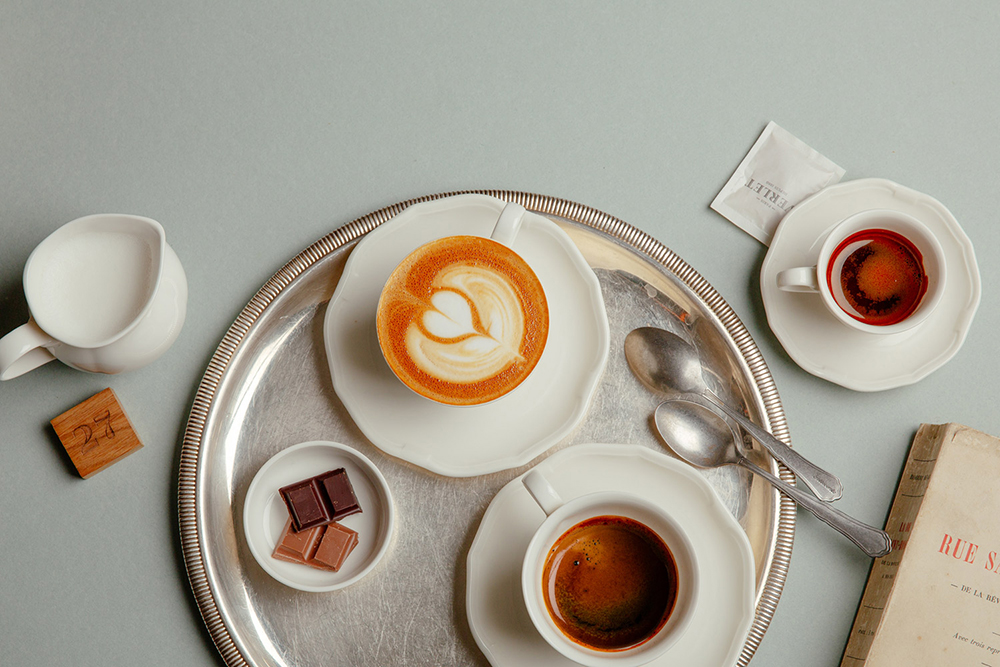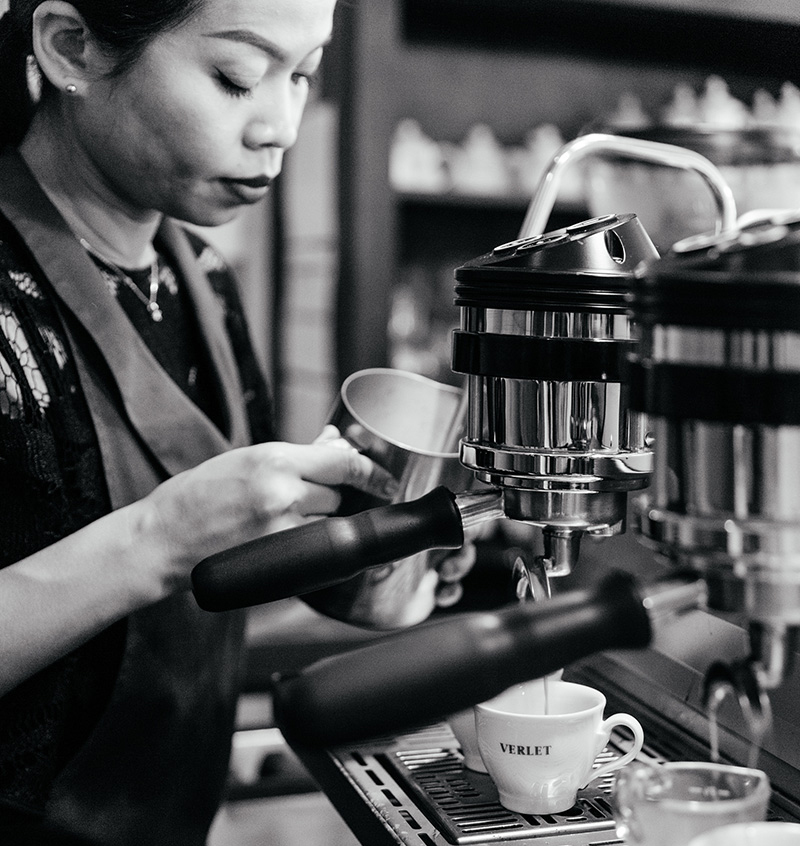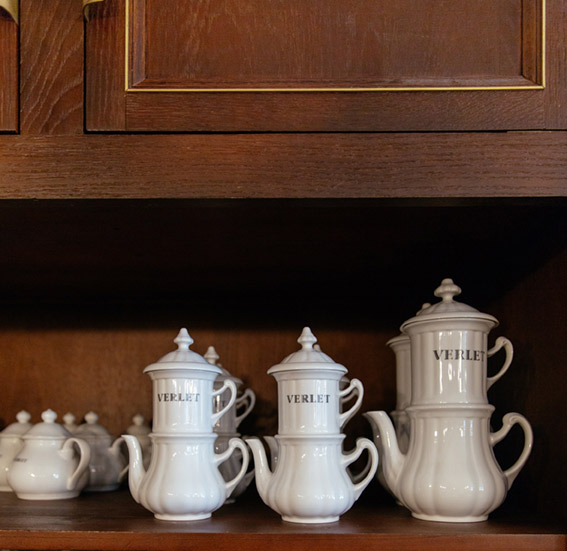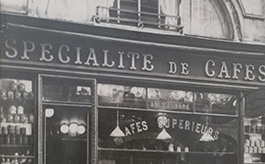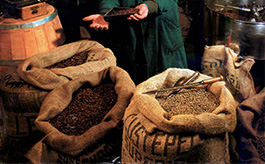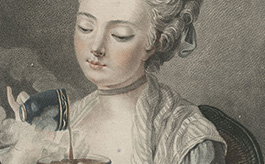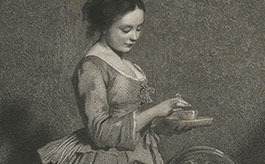The story of coffee
Coffee is the fruit of a shrub with fragrant flowers originally from Yemen in the Arabian Peninsula. From here, the beans conquered the world in a few centuries. Coffee was planted in regions with the most suitable and favourable conditions: altitude, exposure, humidity, acidic or volcanic soil and temperature range. Known as Kawa in the Arab countries, the taste for coffee spread to Constantinople. The shops and stalls where coffee was served became a hotbed for debate and discussion.
Coffee was first brought to France through the port of Marseille in 1657 by Venetian merchants. It was cultivated by botanists in tropical glasshouses in the « Jardin du Roi ». In Paris by the end of the 17th century it had already become a stimulating beverage greatly appreciated by intellectuals, writers and philosophers. Even if it still remained a luxury, its consumption did became more widespread between 1690 and 1730. At the beginning of the 18th century, under King Louis XV, coffee was sent to the French colonies to be intensely cultivated. Consequently the French controlled the production and trade of coffee throughout the world and were at the spearhead of preparation and brewing techniques which bring out the best aromas and flavours.
Coffee was first brought to France in 1657 by Venetian merchants.
Coffee « à la française »
The French are at the origin of the innovations which have made coffee the universal drink it is today. Exotic, but with unskilled preparation, coffee was originally introduced to the European courts as a « liqueur », more as a curiosity than a delicacy. The French method of preparation, brewing coffee using a filter rather than rapidly boiling coffee in water became a benchmark. From Venise to Vienna, all of Europe drank coffee « à la française » and even today the best establishments in the world acknowledge the quality of this method.
The first coffee machines invented by the French refined this brewing technique. Patented in 1820, they were called percolators. The first coffee mill was patented in 1829. In the 1930s the first cylinder roasting machines were invented and manufactured in Paris. These machines became known as espresso machines. The first prototype was patented in France some 60 years before its Italian counterpart. Since that time and until the end of the second world war, the vocabulary used for coffee was French. An espresso was called « café à la minute », a latte « café au lait » and a cappuccino « café crème ». In New York coffee shops in the 1940s, the French term « cafés filtres » was commonly used. However French terminology was eventually overshadowed by other traditions, mainly Italian and American. French « savoir-faire » is embraced by enthusiasts and is reborn thanks to the creativity and originality of Verlet, the jewel in the golden age of French coffee. Verlet is the oldest establishment still operating in the heart of Paris which roasts its own coffee, keeping alive both the passion and know how of the French coffee tradition.
Coffee carefully prepared with a Du Belloy cafetière, without excessive heat or insensitive treatment offers subtle nuanced full-bodied flavour « à la française ».



